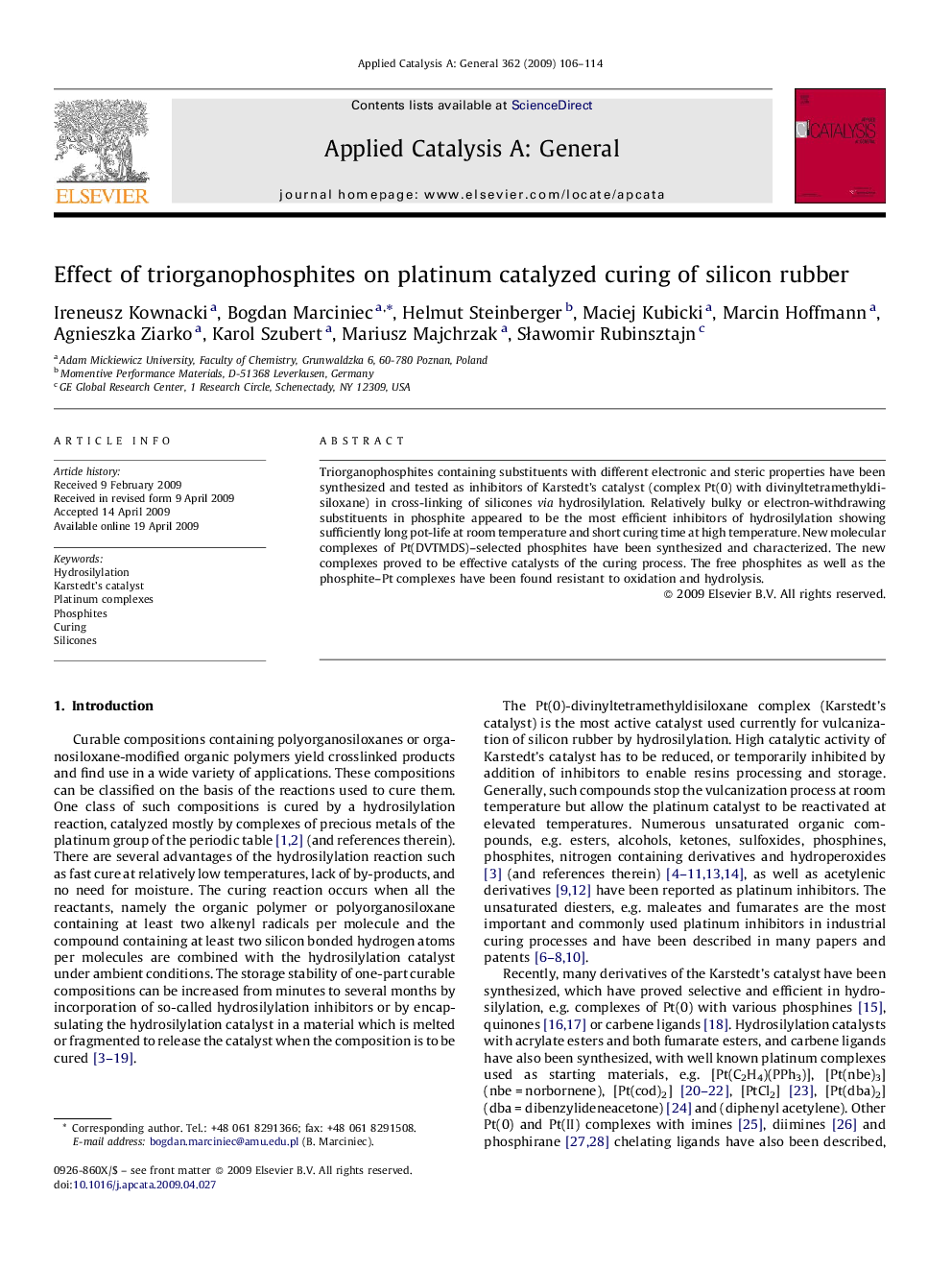| Article ID | Journal | Published Year | Pages | File Type |
|---|---|---|---|---|
| 42694 | Applied Catalysis A: General | 2009 | 9 Pages |
Triorganophosphites containing substituents with different electronic and steric properties have been synthesized and tested as inhibitors of Karstedt's catalyst (complex Pt(0) with divinyltetramethyldisiloxane) in cross-linking of silicones via hydrosilylation. Relatively bulky or electron-withdrawing substituents in phosphite appeared to be the most efficient inhibitors of hydrosilylation showing sufficiently long pot-life at room temperature and short curing time at high temperature. New molecular complexes of Pt(DVTMDS)–selected phosphites have been synthesized and characterized. The new complexes proved to be effective catalysts of the curing process. The free phosphites as well as the phosphite–Pt complexes have been found resistant to oxidation and hydrolysis.
Graphical abstractVarious new triorganophosphites as well as new molecular complexes of Pt(DVTMDS) with selected phosphites have been synthesized and characterized by NMR, as well as structures of phosphite 6 and complex 18 were determined by X-ray methods. Phosphorus inhibitors and new platinum complexes were tested in cross-linking of silicones via hydrosilylation. Catalytic tests followed by DSC method showed that new platinum complexes are very effective in curing process and could be used instead of the currently commercially used catalytic system Pt–Karstedt's/DAM (DAM – diallyl maleate).Figure optionsDownload full-size imageDownload as PowerPoint slide
